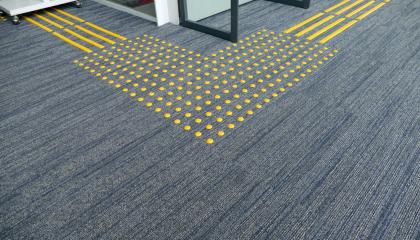Cities are about to get much wetter as global warming increases the intensity of storms, raises sea levels, and disrupts established climate expectations. Moreover, grey infrastructures in cities are straining to keep up with the growth of urban populations. The pattern of increased storms and frequent flooding requires cities to be proactive in finding a solution for water management and emergency systems or risk being overwhelmed by flooding and constant clean-up.
The shift in weather patterns, temperatures, and precipitation has grabbed the attention of scientists, politicians, and society. With more than 80% of the United States population living in cities, studies reveal that these negative weather changes are heightened in these areas due to the infrastructure and population density.
Sidewalk cracks are often an accepted reality of city living, however, non-ADA-compliant and broken sidewalks often result in injury for pedestrians, unnavigable sidewalks for people with mobility devices, and lawsuits against the city.
It’s not unusual to find missing pavement, crumbling curbs, and weeds sprouting between cracks. However, for people who use wheelchairs, broken sidewalks can be impossible to navigate, forcing them to stay at home or use the road to get around. So a simple crack in a sidewalk is not so simple and potentially dangerous.
How detectable warning tiles are installed is crucial to the longevity of the project. There are two types of installations that you need to know about: wet-set and thin-set. Both the wet-set and thin-set installation methods can be used on new construction as well as upgrading pre-existing ramps. Each type of installation can provide longevity and durability when installed correctly.
On Monday, March 18th, Google Doodle featured the Japanese inventor of detectable dome tiles, Seiichi Miyake. His invention changed the world by empowering and protecting individuals with visual impairments to cross streets with greater ease. Fifty-two years have passed since the first dome tiles were installed, and these detectable warning tiles are now part of many cities throughout the world.
Cities offer a wealth of opportunities, both in terms of jobs and accessibility. However, some of those same cities don’t have easily accessible sidewalks, transportation, or office buildings. Although there have been great improvements in accessibility, some cities still have many steps they can take to be more livable and convenient. With the creation of the Americans with Disabilities Act (ADA), many cities are obligated to add detectable warning tiles to their sidewalks and curb cutouts.
The Americans with Disabilities Act (ADA) expects workplaces and public areas to be accessible for people with disabilities. Since 1990, businesses and communities strive to meet these requirements. For example, public areas must take steps to remove barriers and add domed-tile curb ramps to improve accessibility and safety for people with impairments. Buildings constructed before 1990 must make adjustments, but buildings built after 1990 must be ADA compliant.
When the United States passed the Air Carrier Access Act (ACAA), it became illegal for airlines to discriminate against passengers who had an impairment. The law applies to any airline that provides air transportation to, from, or within the United States. Not only does this law cut down on discrimination, but it also requires airlines to provide assistance for passengers, such as a wheelchair, guided assistance for all areas of boarding, or seating accommodation.
Pagination
- Previous page
- Page 2
Connect with us
We pride ourselves on our customer service, and we'd love to hear from you! Sign up for our newsletter to keep up with industry updates and trends, as well as any new product releases.










